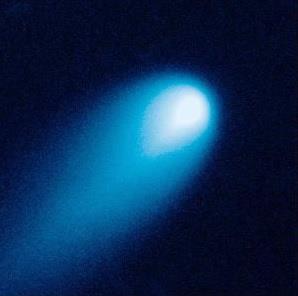November 29, 2013
A comet's 5.5-million-year journey to the inner solar system apparently ended during a suicidal trip around the sun, leaving no trace of its once-bright tail or even remnants of rock and dust, scientists said on Thursday.

November 29, 2013
A comet's 5.5-million-year journey to the inner solar system apparently ended during a suicidal trip around the sun, leaving no trace of its once-bright tail or even remnants of rock and dust, scientists said on Thursday.

The comet, known as Ison, was discovered last year when it was still far beyond Jupiter, raising the prospect of a spectacular naked-eye object by the time it graced Earth's skies in December.
Comet Ison passed just 730,000 miles (1.2 million km) from the surface of the sun at 1:37pm EST/1837 GMT on Thursday. Astronomers used a fleet of solar telescopes to look for the comet after its slingshot around the sun, but to no avail.
"I'm not seeing anything that emerged from the behind the solar disk. That could be the nail in the coffin," astrophysicist Karl Battams, with the Naval Research Laboratory in Washington, said during a live broadcast on Nasa TV."
"It's sad that it seemed to have ended this way, but we're going to learn more about this comet," he added.
At closest approach, the comet was moving faster than 217 miles per second(350 km per second) through the sun's atmosphere.
At that distance, it reached temperatures of 5,000 degrees Fahrenheit(2,760 degrees Celsius) – hot enough to vaporize not just ices in the comet's body, but dust and rock as well.
If the comet or any large fragments survived the close encounter with the sun, they would be visible to the naked eye in Earth's skies in a week or two.
The comet was discovered last year by two amateur astronomers using Russia's International Scientific Optical Network, or Ison.
Comets are believed to be frozen remains left over from the formation of the solar system some 4.5 billion years ago.
The family of comets that Ison belongs to resides in the Oort Cloud, located about 10,000 times farther away from the sun than Earth, halfway to the next star.
Occasionally, an Oort Cloud comet is gravitationally nudged out of the cloud by a passing star and into a flight path that millions of years later brings it into the inner solar system. Computer models show Ison was a first-time visitor.
"I hope we see another one soon," said Dean Pesnell, project scientist for Nasa's Solar Dynamics Observatory.
Courtesy: Reuters















































































































